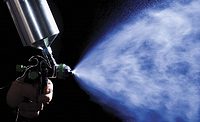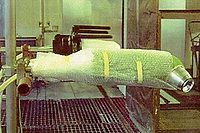Paint Temperature Control Solves Finishing Defects

In spray painting operations, temperature-related variations can result in significant quality problems with film build, color match, surface finish, adhesion, etc. The goals and objectives set forth for this project were to
1) Quantify the relationship between paint temperature and surface finish at each step in the painting process;
2) Demonstrate that controlling paint temperature at the nozzle can reduce the variation across a group of parts and increase first-pass yield;
3) Define a temperature control system that can be installed on the existing robotic paint system with minimal downtime and limited interference with the paint path.
Read the full article here.
Looking for a reprint of this article?
From high-res PDFs to custom plaques, order your copy today!









